Recently, I received an email from Blaine asking me a question about awarding international routes. It was a great question that I did not know the answer. I was talking to Dan Webb, who runs the site Things in the Sky on BoaringArea, and was happy to take on the answer. Here is his story:
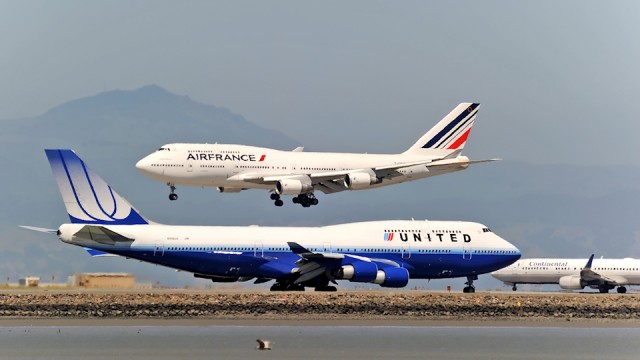
United Airlines and Air France Boeing 747-400s at San Fransisco.
Here is part of an email David recently passed along from a reader:
“’¦how is the DOT involved in the awarding of international routes? From what I gather, domestic routes at up to the discretion of an airline (if it makes business sense, they fly it) but it appears that a myriad of airports and airlines compete for international routes. Often, these are not even to the same city pairs – just takeoff and landing slots within the US?”
Unfortunately, there’s no simple answer to this question because it varies by country. In fact, the State Department has a handy page that lists every aviation agreement between the United States and other countries.
As Blaine mentioned, domestic routes are completely in control of the airlines. (The only time one might see the DOT assigning a route is through the Essential Air Service program, but airlines bid for those contracts.)
In some cases, open skies agreements allow for similar flexibility. The most notable example is the agreement between the US and the European Union, which gives carriers the freedom to fly from any point in the US to any point in the EU, and vice-versa. (One example is the short-lived Air France service from Los Angeles to Heathrow.)
Other times, agreements between the US and other parties can be a bit more restrictive. Mexico is a good example. In most markets, up to two carriers from each country are allowed to provide service, though three carriers are allowed in a few. But while the agreement does put a cap on the number of carriers, airlines still decide if they want to serve a market or not (but they do need government approval to launch service).
Another example is the current agreement between the US and China. In one recent example, new frequencies between the US and China became available, and a bunch of airlines competed for the slots. The DOT then decided what carriers would end up receiving the frequencies.
If issues like this interest anyone, the process of applying for new routes is quite transparent, with relevant filings available at Regulations.gov. I often go that website to look up all DOT filings and then sort them by date to see what’s been happening recently.
Image: iflyfsx
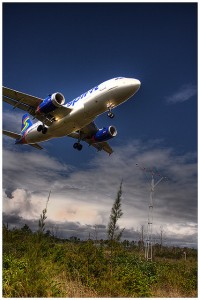
Spirit Airlines Airbus A319 landing.
Spirit has announced a new fee structure and it is causing some airline-hate.
For me, Spirit is the best example of a US-based ultra low cost carrier. They have perfected the art of ala cart pricing, where they offer rock bottom fares, but then have fees for everything else. I think Ryanair holds the crown currently for world-wide uber ultra low cost carrier, but Spirit is quickly catching up. Spirit’s creative fees (ie charging for carry-on bags) causes a lot of media-drama, but it works for them. Most recently they announced a change in their fee structure. If you wait until the last 24 hours before your flight to pay the bag fees, you are going to pay more, but if you pay with more than a day’s notice, your fees stay the same.
Looking at some of the headlines related to this story, you would think Spirit just stole your first born child. For example, Jaunted titled their story, “Spirit Airlines Raises Baggage Fees Again, Screws Over Passengers.” Then, last night the The Consumerist had their story titled something like “Airline charges you a fee to pay a fee,” trying to insinuate some sort of evil double fee. However, it looks like they came to their sense, since this morning, the title has been changed to, “Spirit Airlines Adds Fee For Not Paying Your Baggage Fees Far Enough In Advance.” I have to give them credit for the change.
When first looking at the fees (early vs late, domestic vs international, early vs late), it got very confusing. Luckily Spirit simplified it for me into four tiers:
1. When reserving online more than 24 hours in advance: no price changes
2. While checking online or by telephone: $5 more
3. Waiting until at the airport check-in counter or kiosk: $10 more
4. Pay at the gate: flat $45 fee
Pretty much, if you do not do things last minute, you aren’t going to be charged more. Plus, if you are part of their $9 Fare Club, you will save $10 per fee. Why wouldn’t Spirit do this? People keep flying and paying their fees and Spirit made almost $56million in bag fees alone last year just from January to September (to compare, Delta made over $730million during the same time). This is a lot of extra revenue and very tempting for airlines not only to keep fees, but look at other creative ways to add to fees. According to Dan Webb on Things in the Sky, Spirit has been able to increase their over all bag fee per passenger from $9.59 in the fourth quarter of 2009 to $16.82 for the fourth quarter of 2010.
Some are trying to lobby the government to fight the bag fees and force airlines to include your first bag in the price of your ticket. This just seems inappropriate to me. In the long run, airlines will charge more overall for your ticket and fees and fares should be market driven, not dictated by the government.
Airlines like Southwest and JetBlue still refuse to charge passengers for their first bag, providing alternative for passengers. “Southwest has a 40 year history of sharing the wealth of the maximum value we provide whether it’s in the Customer Service of our People, the predictable efficiency of our operation, or the transparency of our pricing and low fares,” Brad Hawkins with Southwest Communications explains. ” Bags Fly Free and ticketing changes are the pillars of our fee-free stance in not nickel and diming our Customers.”
If you don’t want to pay the fee, then either pay more for a first class ticket or choose an airline that won’t charge you a fee. Even with fees, airline travel with-in the US is very affordable and it is a good thing many can take it for granted.
Image: Noel back in Zurich
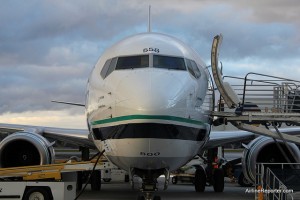
Alaska Airlines Boeing 737-800 ready to go.
Sometimes when things go wrong, it is an opportunity to show what you are made of. On Saturday, Alaska Airlines computer system, used to plan flights, went offline due to a blown transformer. It took over 24 hours to get the system fully running again and there are still passengers who are trying to get to their destination.
From the media’s perspective, Alaska was on their game. During the outtage they posted four different press releases, allowing the media to update passengers. When this sort of thing happens with most other airlines, the media is lucky to get one press release after everything is said and done.
For passengers, both Alaska and Horizon effectively used their social media outlets to not only keep customers informed, but to apologize for the inconvenience. Alaska alone had about 25 tweets about the outage, either providing updates or talking directly to customers who needed assistance. Alaska Air President Brad Tilden and Horizon Air President Glenn Johnson also made a video apologizing for the delay, something that I have never seen an airline do, especially in the middle of the situation.
Now realize, this is all going on over the weekend. All these airline folks were working diligently to get the system back up and keep their customers informed. For me, that is true dedication.
Most airlines are too afraid to have such a public voice when something goes wrong. It takes a risk to be so public when things go wrong, but I think it seperates the good airlines from the great. Even though the computer crash only affected 18% of their flights, it is still a huge impact. Alaska did have to cancel 150 flights, affecting 12,000 passengers. Sure, for many passengers this outreach didn’t mean much help them feel better about not seeing grandma, but just like every other industry out there, airlines are prone to things going wrong. The airline business is extremely complicated and this just goes to show how something relatively minor can have such a large impact.
Cheers to Alaska Airlines and Horizon Air for being so open with the issues and getting them solved.
Alaska gets more kudos from Dan Webb via his blog Things in the Sky Blog and Brett Snyder on CrankyFlier.com.
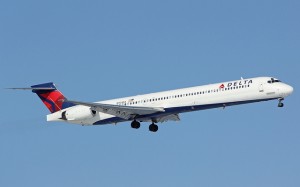
Delta Air Lines MD-90
A little less than two weeks ago I took a look at Delta buying nine MD-90s from Japan Air Lines. Well, Dan Webb over on his blog Things in the Sky decided to take it to the next level and really dive into the MD-90 and I think it is very much worth sharing. Check out his story: Random Thoughts on Delta and the MD-90.
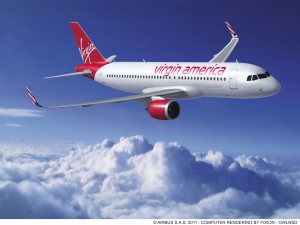
The new Airbus A320neo in Virgin America livery. Image from Airbus.com.
Virgin American has announced they are the launch customer of the new Airbus A320neo with 30 orders of the aircraft. Before the first deliveries of the A320neo start in 2016, Virgin America also has orders for 30 Airbus A320’s with sharklets. This is a huge deal for the relatively new airline.
The Airbus A320neo is the next generation of the A320 family. The aircraft will allow New Engine Options (hence “neo”) which will increase range, lower fuel costs, while allowing airlines to keep a single fleet family of A320 aircraft.
Be sure to check out Dan Webb’s blog, Things in the Sky, as he was recently able to have a chat with Virgin America CEO David Cush and got some pretty interesting information.




